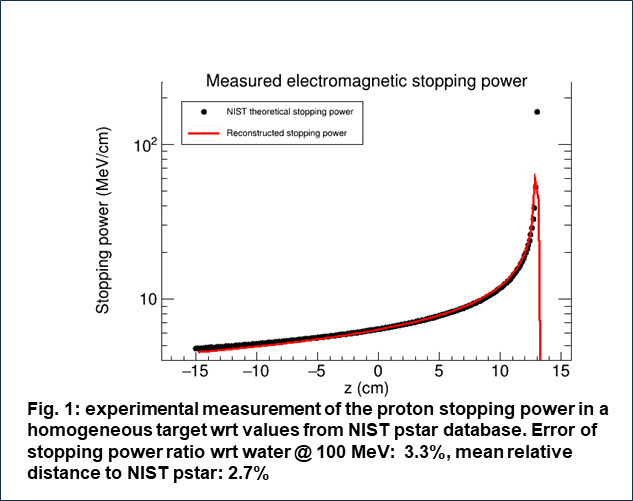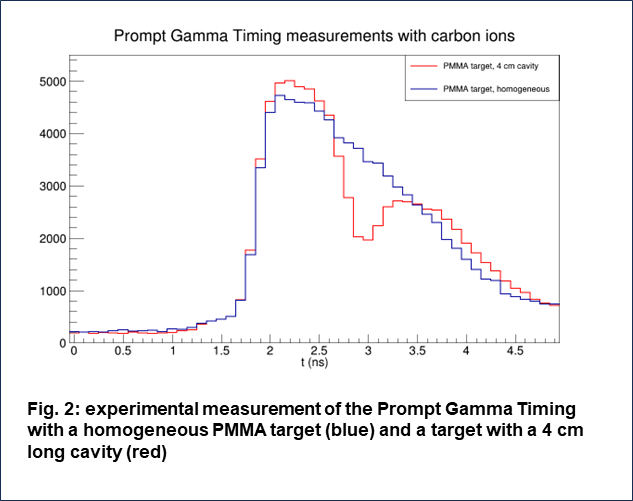Speaker
Description
The SIG and MERLINO INFN projects are developing new technologies for Particle Therapy beam monitoring systems, also integrating range a verification technique based on Prompt Gamma Timing (PGT) with a primary particle beam monitor able to track the single particles.
The aim of the final system is to measure on-line the time difference between a single primary particle crossing a thin silicon detector and the secondary prompt photons detected by a scintillation detector .
Materials and methods
Thin silicon detectors with and without gain layer and segmented in strips were used for the primary particle time measurement, and either one or seven cylindrical 1.5’ LaBr3(Ce) crystals were used for prompt photon time measurement. Different experimental setups were developed and tested at CNAO in Pavia (Italy), delivering proton beams of 227 MeV at sub-clinical rate (2-4E7 pps) as well as carbon ion beams of 398 MeV/u at both sub-clinical and clinical rates (5E7-E8 pps).
Aiming to reconstruct the proton stopping power, tests were performed irradiating a homogeneous PMMA phantom with a proton beam and detecting the secondary photons with a set of seven LaBr3(Ce) scintillators in different positions along the beam line readout. The time of primary protons was evaluated from the signals from 8 strips, 2 mm2 area each, of a LGAD sensor with 60 um thickness readout by an 8-channel custom frontend board. The signals from both detectors were acquired by means of a 2.5 Gs/s CAEN digitizer.
In tests with carbon ion beam at sub-clinical rate only one PMT and a strip silicon sensor without gain layer were used. First, a homogeneous PMMA phantom was irradiated, then a phantom with a 4 cm air cavity to evaluate the sensitivity of the PGT system .
Finally, to test PGT at clinical rate and with different carbon ion beam energies, a 2.7 x 2.7 cm2 silicon sensor hosted on a 144-channel frontend board based on ABACUS ASICSs was used. Only 8 digital outputs were readout through a CERN PicoTDC ASIC interfaced with a Virtex7 FPGA. This DAQ allows continuous acquisition, with a vast duty cycle improvement with respect to the digitizer-based acquisitions. The secondary photons emitted in a three-slab PMMA phantom were measured by a scintillator detector, readout by SiPMs matrices.
Results
The PGT distributions from tests with protons were processed with a Maximum Likelihood Expectation Maximization algorithm followed by a regression analysis, to reconstruct the proton stopping power in the homogeneous target (Fig. 1).
With the carbon ion beam at sub-clinical rate, the resulting PGT distributions with and without the 4-cm air cavity were clearly different and allowed us to identify the cavity (Fig.2).
The optimized DAQ for primary particles allowed us to precisely measure the beam particle time distribution and the bunch structure with an unprecedented detail level.
Conclusions
Non-invasive and real-time approaches such as PGT are desired to monitor therapy effectiveness and reduce uncertainties in treatment planning. First tests of a prototype of PGT system were successfully performed with both protons and carbon ions at sub-clinical and clinical rate.



